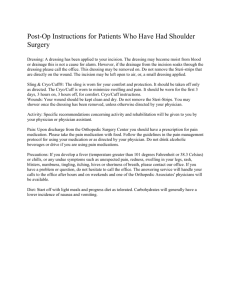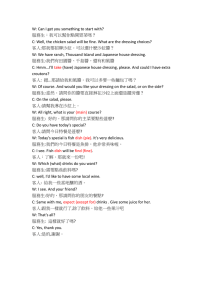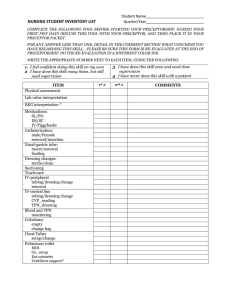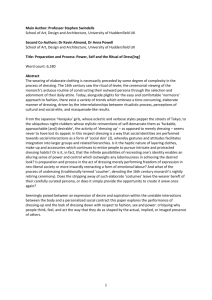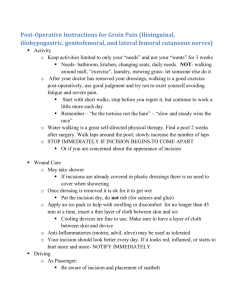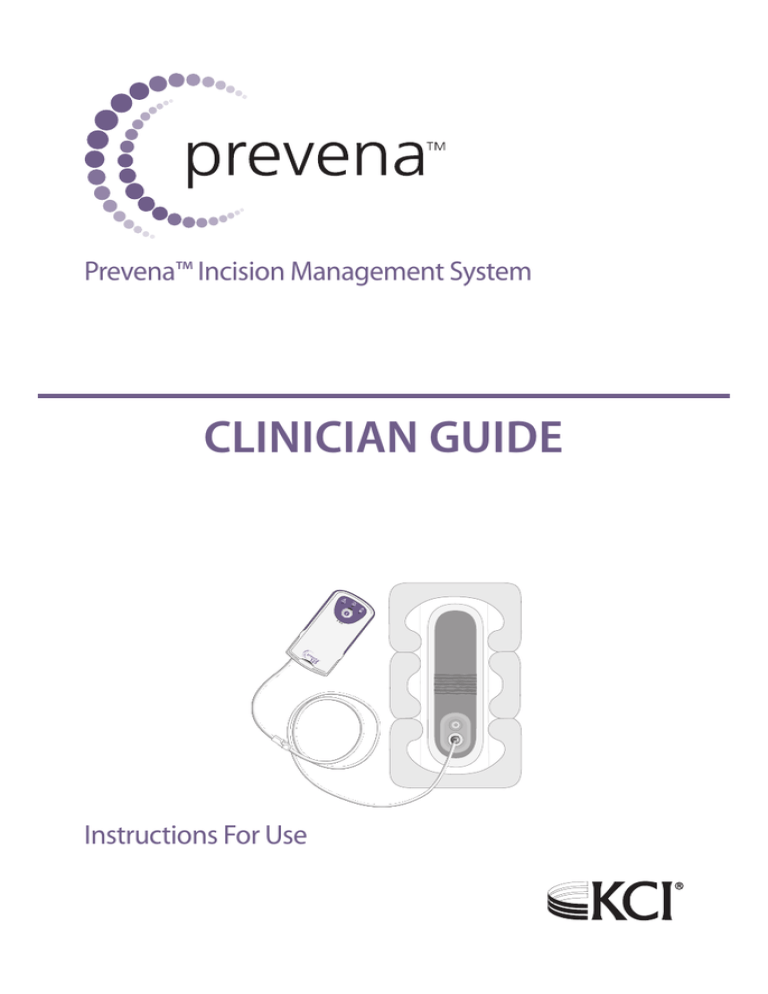
Prevena™ Incision Management System
CLINICIAN GUIDE
Instructions For Use
CLINICIAN GUIDE
PREVENA™ INCISION MANAGEMENT SYSTEM
KCI customer contact information is located in the back of this guide.
Important Information For Users
As with any prescription medical device, failure to carefully read and follow all instructions and
safety information prior to use may lead to improper product performance.
All disposable components of the Prevena™ Incision Management System (IMS) are for single
use only. Re-use of disposable components may result in wound contamination, infection and /
or failure of the wound to heal.
CAUTION: The Prevena™ IMS should be applied and removed only by qualified physicians,
nurses or caregivers.
Indication for Use
The Prevena™ Incision Management System is intended to manage the environment of surgical
incisions that continue to drain following sutured or stapled closure by maintaining a closed
environment and removing exudate via the application of negative pressure wound therapy.
Optimum Use Conditions
For maximum benefit the Prevena™ IMS should be applied immediately post surgery to clean
surgically closed wounds. It is to be continuously applied for a minimum of two days up to a
maximum of seven days. It can transition home with the patient; however, all Prevena™ Incision
Dressing changes should be performed under direct medical supervision.
The Prevena™ IMS will not be effective in addressing complications associated with the
following:
•
ischemia to the incision or incision area
•
untreated or inadequately treated infection
•
inadequate hemostasis of the incision
•
cellulitis of the incision area
The Prevena™ IMS should not be used to treat open or dehisced surgical wounds or on patients
who have excessive amounts of exudate from the incision area which may exceed the Prevena™
45 mL Canister. The V.A.C.® Therapy System should be considered for treatment of these
wounds.
The Prevena™ IMS should be used with caution in the following patients:
•
patients with fragile skin surrounding the incision as they may experience skin or tissue
damage upon removal of the Prevena™ Incision Dressing
•
patients who are at an increased risk of bleeding from the incision associated with the use
of anticoagulants and / or platelet aggregation inhibitors
Contraindication
•
sensitivity to silver
3
Warnings
Bleeding: Before applying the Prevena™ IMS to patients who are at risk of bleeding
complications due to the operative procedure or concomitant therapies and / or co-morbidities,
ensure that hemostasis has been achieved and all tissue planes have been approximated. If
active bleeding develops suddenly or in large amounts during therapy, or if frank blood is seen
in the tubing or in the canister, the patient should leave the Prevena™ Incision Dressing in place,
turn off the Prevena™ 125 Therapy Unit and seek immediate emergency medical assistance.
Infected Wounds: As with any wound treatment, clinicians and patients / caregivers should
frequently monitor the patient’s wound, periwound tissue and exudate for signs of infection
or other complications. Some signs of infection are fever, tenderness, redness, swelling,
itching, rash, increased warmth in the wound or periwound area, purulent discharge or strong
odor. Infection can be serious, and can lead to complications such as pain, discomfort, fever,
gangrene, toxic shock, septic shock and / or fatal injury. Some signs or complications of systemic
infection are nausea, vomiting, diarrhea, headache, dizziness, fainting, sore throat with swelling
of the mucus membranes, disorientation, high fever, refractory and / or orthostatic hypotension
or erythroderma (a sunburn-like rash). Silver in the interface layer of the Prevena™ Incision
Dressing is not intended to treat infection, but to reduce bacterial colonization in the fabric. If
infection develops, Prevena™ Therapy should be discontinued until the infection is treated.
Allergic Response: The Prevena™ Incision Dressing has an acrylic adhesive coating and a skin
interface layer with silver, which may present a risk of an adverse reaction in patients who
are allergic or hypersensitive to acrylic adhesives or silver. If a patient has a known allergy or
hypersensitivity to these materials, do not use the Prevena™ IMS. If any signs of allergic reaction,
irritation or hypersensitivity develop, such as redness, swelling, rash, urticaria or significant
pruritus, patient should consult a physician immediately. If bronchospasm or more serious signs
of allergic reaction appear, the patient should turn off the therapy unit and seek immediate
emergency medical assistance.
Defibrillation: Remove the Prevena™ Incision Dressing if defibrillation is required in the area of
dressing placement. Failure to remove the dressing may inhibit transmission of electrical energy
and / or patient resuscitation.
Magnetic Resonance Imaging (MRI): The Prevena™ 125 Therapy Unit is MR unsafe. Do not
take the Prevena™ 125 Therapy Unit into the MR environment. The Prevena™ Incision Dressing
can typically remain on the patient with minimal risk in an MR environment. Interruption of
Prevena™ Therapy during MRI may reduce the effectiveness of Prevena™ Incision Management
Therapy.
Diagnostic Imaging: The Prevena™ Incision Dressing contains metallic silver that may impair
visualization with certain imaging modalities.
Hyperbaric Oxygen Therapy (HBO): Do not take the Prevena™ 125 Therapy Unit or Prevena™
Incision Dressing into a hyperbaric oxygen chamber. They are not designed for this environment
and should be considered a fire hazard. If Prevena™ Therapy is reinitiated after HBO treatment,
do not readhere the same dressing; a new dressing must be applied.
Canister Full: If at any time while using the Prevena™ IMS the canister becomes full of fluid other
than blood, indicated by a Maximum Capacity Alert or visual inspection, the patient should turn
off the therapy unit and contact the treating physician.
Standard Operation: Do not use accessories or materials not provided with the Prevena™ IMS.
4
Precautions
Standard Precautions: To reduce the risk of transmission of bloodborne pathogens, apply
standard precautions for infection control with all patients, per institutional protocol, regardless
of their diagnosis or presumed infection status.
Circumferential Dressing Application: Avoid applying the Prevena™ Incision Dressing
circumferentially. In cases where the clinician determines that the benefits of applying the
Prevena™ Incision Dressing circumferentially outweigh the risk of circulatory compromise,
extreme care should be taken not to stretch or pull the dressing when securing it. Attach
the dressing loosely and stabilize edges with an elastic wrap if necessary. It is crucial to
systematically and recurrently palpate distal pulses and assess distal circulatory status. If
circulatory compromise is suspected, discontinue therapy and remove dressing.
Electrodes or Conductive Gel: Do not allow the Prevena™ Incision Dressing to come in contact
with EKG or other electrodes or conductive gels during electronic monitoring or when taking
electronic measurements.
Dressing Components: The Prevena™ Incision Dressing contains ionic silver (0.019%).
Application of products containing silver may cause temporary tissue discoloration.
•
Always use Prevena™ dressings and canisters from sterile packages that have not been
opened or damaged.
•
All components of the Prevena™ IMS are for single use only. Do not re-use any component
of this system.
•
To avoid trauma to the skin, do not pull or stretch the adhesive border of the dressing
during application.
5
Prevena™ Incision Management System Description
The Prevena™ IMS contains the following single use, disposable components.
Prevena™ Patch Strips™ - used to help seal leaks around dressing.
Prevena™ 45 mL Canister - a sterile reservoir for collection of wound
fluids.
Prevena™ 125 Therapy Unit - delivers negative pressure to the surgical
area. The unit is battery powered. The non-sterile Prevena™ Carrying
Case is provided to facilitate patient mobility.
Prevena™ Incision Dressing with Pressure Indicator - a specially
designed dressing for application to the surgical area.
The dressing contains a skin interface layer that includes 0.019% ionic
silver. In vitro log reduction tests, conducted without application of
negative pressure, exposed samples of the skin interface layer to a six
log challenge of each of the microorganisms listed below. Following
inoculation, samples were tested for microbial counts immediately
(day 0) and after incubation at 32ºC in diluted nutrient broth for 1, 3, 5
and 7 days.
The log reductions from the day 0 values are provided in the table below.
Challenge Organism
Mean Log Reduction from Day 0
Day 1
Day 3
Day 5
Day 7
Escherichia coli (ATCC 8739)
2.2
4.0
3.9
4.5
Pseudomonas aeruginosa (ATCC 09027)
2.0
3.9
3.5
3.7
Staphylococcus aureus (ATCC 6538)
1.6
3.6
3.6
3.5
Klebsiella pneumonia (ATCC 4352)
1.4
1.8
2.7
3.5
Candida albicans (ATCC 10231)
2.5
3.1
3.2
3.2
Aspergillus niger (ATCC 16404)
2.2
4.1
4.0
3.6
The Prevena™ Incision Dressing , 45 mL Canister and the 125 Therapy Unit are classified Applied
Parts according to IEC 60601-1:2005.
All patient contact materials are free of latex and DEHP [Di(2-ethylhexyl)phthalate].
6
Prevena™ Incision Management System Application
Site Preparation
1. Prior to surgery, shave or clip the surgical area where the dressing will be applied to
improve dressing adhesion and seal integrity.
2. Gather all items needed for application:
sterile wound cleaning solution, e.g. water, saline or alcohol
sterile gauze or other material to clean application site
• Prevena™ IMS (Check expiration date on box)
3. After surgery, cleanse the application site with sterile gauze and sterile wound cleaning
solution using a circular motion beginning at the center of the surgical area and extending
outward to ensure that the site is free of foreign material.
•
•
4. Pat the application site dry with sterile gauze. To ensure proper adhesion, the application
site must be completely dry before dressing is applied.
Drain Tubes and Pain Management Control Devices
The Prevena™ IMS can be used with both drain tubes and pain devices, provided the dressing
is not placed over tubing where it exits the skin. Surgical drains must be routed under the skin
beyond the boundary of the dressing and function independently of the Prevena™ IMS.
NOTE: While the concomitant use of surgical drains is allowable with the Prevena™ IMS, the
system must not be used as an outlet or reservoir for the drain.
Dressing Application
1. Open the sterile dressing package and remove dressing and patch
strips using aseptic technique. Do not use if package has been torn
or the sterile seal has been compromised.
2. Gently peel back the center strip on the back of the dressing
exposing the pull tabs and adhesive.
3. Center and apply the dressing over the closed wound or incision
ensuring that the adhesive will not contact or cover the surgical
closure. Orient the dressing on the patient to eliminate sharp bends
or kinks in the tubing.
4. Remove the remaining bottom adhesive covers by grasping the
bottom tabs and gently pulling.
5. Firmly press around the dressing to ensure a good seal where the
adhesive contacts the skin.
6. Remove top stabilization layers.
7
7. Remove the Prevena™ 45 mL Canister from
the sterile package. Do not use if package
has been torn or the sterile seal has been
compromised. Connect the dressing
tubing to the canister tubing by twisting
the connectors until they lock.
Side Tabs
8. Insert the canister into the Prevena™ 125
Therapy Unit and slide inward until canister
clicks. Canister is fully inserted when the
side tabs are flush with the body of the
therapy unit.
9. Begin therapy.
Beginning Therapy
1. Press and hold the on / off button for two seconds; an audible beep
will confirm that therapy is on. A green light on the front of the unit
indicates that therapy is on.
Green Light
NOTE: Pressing the on / off button begins the 192 hour (eight day
expected service life) life cycle of the therapy unit. Turning the therapy unit off stops the life cycle counter. Turning the therapy unit on
for purposes other than delivering therapy reduces the life cycle of
the therapy unit. It is not recommended to press the on / off button
until therapy is ready to begin.
On / Off Button
NOTE: To turn therapy unit off, press and hold the on / off button for five seconds.
2. With therapy on, assess dressing to ensure integrity of seal.
• The dressing should have a wrinkled appearance and the foam
bolster should be compressed.
• The pressure indicator on the dressing should be in the
collapsed position.
• If there is any evidence of a leak, refer to the Leaks section on
page 11.
3. Place the therapy unit into the Prevena™ Carrying Case. Make sure
the display is visible through the opening in the carrying case when
the front flap is lifted.
4. The Prevena™ Carrying Case has an integrated belt loop and a
separate adjustable strap to allow for versatile positioning.
CAUTION: Do not wrap carrying case strap or dressing tubing around neck.
8
Duration of Therapy
•
Therapy should be continuous for a minimum of two days up to a maximum of seven days.
•
Therapy unit will automatically time-out after 192 hours (eight days) of cumulative run
time.
•
Patients should be instructed not to turn therapy off unless:
º
º
º
º
º
º
advised by the treating physician
bleeding develops suddenly or in large amounts during therapy
there are serious signs of allergic reaction
the canister is full of fluid
batteries need to be changed
system alerts must be addressed
•
Patient should be instructed to contact the treating physician if therapy unit turns off and
cannot be restarted before therapy is scheduled to end, or if canister becomes full of fluid.
•
At end of therapy, patient should return to treating physician for dressing removal.
Dressing Removal
NOTE: If dressing is lifted to observe wound, do not re-adhere the same dressing; a new
dressing must be applied.
WARNING: Dressings should always be removed in-line with the sutures and NEVER across
the sutures.
1. Turn Prevena™ Therapy Unit off by pressing
and holding the on / off button for five
seconds.
2. Gently stretch the drape / dressing
horizontally to release the adhesive from
the skin. Do not peel vertically.
Remove the drape / dressing in-line with
the sutures, NEVER across the sutures.
3. Clean any residual adhesive with alcohol
swab.
New Dressing Application
1. Ensure that area is clean, using an alcohol swap or antiseptic wipe.
2. Allow skin to completely dry before applying.
3. Follow Dressing Application instructions on page 7.
9
Indicators and Alerts
Caution Indicator
Visual Alerts - Solid LEDs cannot be turned off by the user. Visual alerts
will only stop when the alert condition has been corrected.
Audible Alerts - Repeated beeps (which in some cases will increase in
Audible Alarm (Muted) volume) can be temporarily muted (paused) by pressing the on / off
button once. The audible alert will re-occur after 60 minutes unless the
alert condition has been corrected.
Battery Level
The therapy unit will provide audible and visual alerts as shown below.
If alert conditions cannot be corrected, patient should contact
treating physician. For further product support see Customer Contact
Information section of this guide.
Leak Alert
One beep, one solid yellow light.
See Correcting Leak Condition on page 11.
When leak condition is corrected the therapy unit will cancel alert.
There may be a delay between when the leak is corrected and when
the alert is discontinued.
Canister Full Alert
Two beeps, one solid yellow light.
Visually inspect canister. If full or near full, turn therapy unit off and call
the treating physician immediately.
Low Battery Alerts
One beep, one solid yellow light. Change batteries within six hours.
One beep, repeating rapidly, increasing in volume, one solid yellow
light. Change batteries immediately.
Battery replacement will cancel the alert.
See Battery Replacement section page 13.
System Error Alert
One beep, repeating rapidly, increasing in volume, two solid yellow
lights. Turn the unit off and then on again.
If alert continues, notify the treating physician.
Device Lifecycle Expired
Three solid yellow lights. If the lifecycle expires while therapy unit is on,
a beep will sound for 15 seconds and then automatically shut off.
If the therapy unit is off, has exceeded the run-time, and an attempt is
made to turn the therapy unit on, the therapy unit will alert for three
seconds and automatically shut off. Call the treating physician.
10
Leaks
VisiCheck™ Feature
Best
To ensure proper application of the Prevena™ IMS, the Prevena™ 125
Therapy Unit provides a VisiCheck™ feature.
By double pressing the on / off button, the unit will display the leak
rate of the system for three seconds.
Good
Marginal
To prevent nuisance leak alarms, the leak rate status should be “Best”
(one light illuminated) or “Good” (two lights illuminated).
If the VisiCheck™ feature indicates a “Marginal” (three lights
illuminated) leak rate condition, refer to the following Correcting a
Leak Condition section for methods of reducing the leak rate of the
system. The system leak rate is calculated every seven seconds. If a
corrective action is taken to reduce a leak rate, use the VisiCheck™
feature afterward to verify the leak rate condition was corrected.
When the therapy unit detects a leak:
•
A visual and audible leak alert will activate. See Indicators and Alerts section on page 10.
•
Therapy unit will turn on more frequently.
•
Pressure indicator on the dressing may be in the up position. See the Prevena™ Incision
Dressing Pressure Indicator section on page 12 for an example.
Correcting a Leak Condition
1. With therapy unit on, slowly press firmly around dressing edge, to
ensure good contact between adhesive and skin.
2. If a leak is identified, use Prevena™ Patch Strips™ (located in dressing
package) to help seal leaks around dressing. If large wrinkles are
present place patch strips so they run in line along the length of the
wrinkle, and not across the wrinkle.
11
Correcting a Leak Condition continued
3. Ensure canister is securely locked in the therapy unit. When canister
is installed, a distinct click will be heard indicating it has been
properly installed. Side tabs on canister should be flush with unit.
4. Check tubing connectors to ensure they are fully engaged.
5. Indications that a leak condition has been corrected:
•
•
•
Therapy unit will become quiet, running only intermittently.
Audible leak alert stops; visual alert turns off. There may be a
brief delay between when the leak is corrected and the alert is
discontinued.
Pressure indicator on the dressing will return to the down
position. See Prevena™ Incision Dressing Pressure Indicator
section below for an example.
Prevena™ Incision Dressing Pressure Indicator
Each dressing is equipped with a pressure indicator that shows when
system pressure is at an acceptable level.
Indicator up - system pressure not acceptable.
Indicator down - system pressure acceptable.
12
Battery Replacement
Battery replacement should be done as quickly as possible after a low battery alert to prevent
therapy down-time.
1. Turn therapy unit off (press and hold on / off button for five
seconds).
2. Remove therapy unit from carrying case. Turn the therapy unit over
to expose the back side of the unit.
3. Locate the battery door and push to slide open. Install three AA
batteries (lithium batteries are recommended for optimal
performance) into the battery compartment.
NOTE: Always replace with new batteries. Do not mix new batteries with used batteries.
NOTE: The inside of the battery compartment is stenciled with “+” positive and “-” negative
to aid in proper battery installation.
4. Close battery door.
5. Return therapy unit to carrying case.
6. Turn therapy unit on to resume therapy (press and hold on / off
button for two seconds).
13
Instructions For Patient
Review the following information with the patient prior to discharge. This information is
summarized in the Prevena™ IMS Patient Guide which must be provided to the patient at
discharge.
Daily Use
The Prevena™ IMS is portable and small enough that it may be worn beneath clothing during
normal patient activities as approved by the treating physician.
CAUTION: Advise patient to NOT SUBMERGE therapy unit or dressing in liquid and to ensure
therapy unit is not pulled into a tub or sink where it may become submerged.
CAUTION: The Prevena™ IMS is a medical device not a toy. Keep away from children, pets and
pests as they can damage the dressing and therapy unit and affect performance.
Keep therapy unit free of dust and lint.
Sleeping
Instruct patient to:
•
place the therapy unit in a position where tubing will not become kinked or pinched.
•
ensure therapy unit will not be pulled off a table or fall to the floor during sleep.
Showering and Bathing
Advise patient of the following recommendations:
•
Light showering is permissible, bathing is not.
•
While showering, the device and dressing should be protected
from prolonged direct spray and / or being submerged.
º
º
•
Hanging the therapy unit from a soap / shampoo holder or
shower head may be acceptable if protected from prolonged
direct spray.
Dressing may be exposed to common shower soaps and rinsed
with indirect shower stream. Do not submerge dressing. Do not
remove dressing.
When towel drying, avoid disturbing or damaging dressing.
Strenuous Activity
Advise patient as to when and at what level physical activities may be resumed. It is
recommended that patients avoid strenuous activity while using the Prevena™ IMS.
Cleaning
Advise patient that the Prevena™ 125 Therapy Unit and Prevena™ Carrying Case can be wiped
with a damp cloth using a mild household soap solution that does not contain bleach.
Device Disposal
At the end of therapy, the patient should return therapy unit to physician for disposal.
Dispose of all waste according to local requirements. Improper disposal may run the risk of
regulatory non-compliance.
14
Specifications
Environmental and Storage Conditions
Storage Conditions
Temperature Range ...............................................................................................- 4ºF (-20ºC) to 140ºF (60ºC)
Relative Humidity Range .....................................................................................15% - 95%, non-condensing
Operating Conditions
Temperature Range .................................................................................................41ºF (5ºC) to 104ºF (40ºC)
Atmospheric Pressure Range ..........................................................................1060 hpa (-1253 ft /-381.9 m)
(for Optimum Performance)
to 700 hpa (9878 ft / 3010 m)
Equipment not suitable for use in presence of flammable anesthetic mixture with air, oxygen or
nitrous oxide.
The Prevena™ IMS is classified as a Type BF applied part under IEC 60601-1:2005 (3rd Edition).
IP24 - Protection against solid objects greater than 12.5 mm and against liquid water sprays for
short periods of time.
All alerts are classified as low priority according to IEC 60601-1-8:2006.
Electromagnetic Compatibility
Electromagnetic Interference - Although this equipment conforms with the intent of the
directive 89 / 336 / EEC in relation to electromagnetic compatibility (EMC), all electrical
equipment may produce interference. If interference is suspected, move equipment away from
sensitive devices or contact the manufacturer.
Portable and mobile RF communications equipment can affect medical electrical equipment.
Medical electrical equipment needs special precautions regarding EMC and needs to be
installed and put into service according to the EMC information in the following tables.
The following tables document compliance levels and guidance from the IEC 60601-1-2:2007
Standard, for the electromagnetic environment in which the Prevena™ 125 Therapy Unit should
be used in a clinical environment. The Prevena™ 125 Therapy Unit also meets the standard
for electromagnetic compatibility related to use in the home care environment (IEC 60601-111:2010).
Guidance and manufacturer’s declaration - electromagnetic emissions
The Prevena™ 125 Therapy Unit is intended for use in the electromagnetic environment specified
below. The customer or user of the Prevena™ 125 Therapy Unit should assure that it is used in such an
environment.
Emission Test
Compliance
Electromagnetic environment
RF emissions
CISPR 11
Group 1
The Prevena™ 125 Therapy Unit uses RF energy only for internal
function. Therefore, its RF emissions are very low and are not
likely to cause any interference in nearby electronic equipment.
RF emissions
CISPR 11
Class B
Harmonic emissions
IEC 61000-3-2
Not applicable
Voltage fluctuations /
flicker emissions
IEC 61000-3-3
Not applicable
Battery operated device
15
Guidance and manufacturer’s declaration - electromagnetic immunity
The Prevena™ 125 Therapy Unit is intended for use in the electromagnetic environment specified below.
The customer or user of the Prevena™ 125 Therapy Unit should assure that it is used in such an
environment.
Immunity Test
IEC 60601
Test Level
Compliance Level
Electromagnetic Environment
Guidance
Electrostatic discharge
(ESD)
IEC 61000-4-2
± 6 kV contact
± 8 kV air
± 6 kV contact
± 8 kV air
In accordance with IEC 60601-12: 2007, floors are covered with
synthetic material, the relative
humidity should be at least 30 %.
Not Applicable
Battery operated device
Not Applicable
Battery operated device
Not Applicable
Battery operated device
3A/m
Power frequency magnetic fields
should be at levels characteristic
of a typical location in a typical
commercial or hospital environment.
Electrical fast
transient / burst
IEC 61000-4-4
Surge
IEC 61000-4-5
± 2 kV
for power supply lines
± 1 kV
for input / output lines
± 1 kV line(s) to line(s)
± 2 kV line(s) to earth
<5 % Ur
(>95 % dip in Ur)
for 0.5 cycle
40 % Ur
Voltage dips,
short interruptions and
voltage variations on
power supply input
lines
IEC 61000-4-11
(60 % dip in Ur)
for 5 cycles
70 % Ur
(30 % dip in Ur)
for 25 cycles
<5 % Ur
(>95 % dip in Ur)
for 5 cycles
Power frequency
(50Hz / 60Hz)
magnetic field
IEC 61000-4-8
3A/m
NOTE: Ur is the a.c. mains voltage prior to application of the test level.
16
Recommended separation distances between portable and mobile RF
communications equipment and the Prevena™ 125 Therapy Unit
The Prevena™ 125 Therapy Unit is intended for use in an electromagnetic environment in which radiated
RF disturbances are controlled. The customer or the user of the Prevena™ 125 Therapy Unit can help
prevent electromagnetic interference by maintaining a minimum distance between portable and mobile
RF communications equipment (transmitters) and the Prevena™ 125 Therapy Unit as recommended
below, according to the maximum output power of the communications equipment.
Rated maximum
output power of
transmitter
Separation distance according to frequency of transmitter
m
150 kHz to 80 MHz
W
not applicable
80 MHz to 800 MHz
3.5
d=[
] P
E1
800 MHz to 2.5 GHz
d=[
7
]
E1
0.01
not applicable
0.12
0.23
0.1
not applicable
0.37
0.74
1
not applicable
1.17
2.33
10
not applicable
3.69
7.38
100
not applicable
11.67
23.33
P
For transmitters rated at a maximum output power not listed above, the recommended separate distance
d in metres (m) can be estimated using the equation applicable to the frequency of the transmitter,
where P is the maximum output power rating of the transmitter in watts (W) according to the transmitter
manufacturer.
NOTE 1, At 80 MHz and 800 MHz, the separation distance for the higher frequency range applies.
NOTE 2, These guidelines may not apply in all situations. Electromagnetic propagation is affected by
absorption and reflection from surfaces, objects and people.
17
Guidance and manufacturer’s declaration - electromagnetic immunity
The Prevena™ 125 Therapy Unit is intended for use in an electromagnetic environment specified
below. The customer or user of the Prevena™ 125 Therapy Unit should assure that it is used in such an
environment.
Immunity
Test
IEC 60601
Test Level
Compliance Level
Electromagnetic Environment Guidance
Not Applicable
Portable and mobile RF communications equipment
should be used no closer to any part of the Prevena™
125 Therapy Unit, including cables, than the
recommended separation distance calculated from
the equation application to the frequency of the
transmitter.
3 Vrms
Conducted RF
IEC 61000-4-6
150 kHz
to
80 MHz
Recommended separation distance
Battery Operated Device
3V/m
Radiated RF
3V/m
IEC 61000-4-3
80 MHz
to
2.5 GHz
80 MHz
to
2.5 GHz
3.5
]
E1
P
80 MHz to 800 MHz
d=[ 7 ]
P
800 MHz to 2.5 GHz
d=[
E1
Where P is the maximum output power rating of the
transmitter in watts (W) according to the transmitter
manufacturer and d is the recommended separation
distance in metres (m)
Field strengths from fixed RF transmitters, as
determined by an electromagnetic site survey 1,
should be less than the compliance level in each
frequency range. 2
Interference may occur in the vicinity of equipment
marked with the following symbol:
NOTE 1, At 80 MHz and 800 MHz, the higher frequency range applies.
NOTE 2, These guidelines may not apply in all situations. Electromagnetic propagation is affected by
absorption and reflection from structures, objects and people.
Field strengths from fixed transmitters, such as base stations for radio (cellular / cordless) telephones
and land mobile radios, amateur radio, AM and FM radio broadcast and TV broadcast cannot be predicted
theoretically with accuracy. To asses the electromagnetic environment due to fixed RF transmitters, an
electromagnetic site survey should be considered. If the measured field strength in the location in which
the Prevena™ 125 Therapy Unit is used exceeds the applicable RF compliance level above, the Prevena™
125 Therapy Unit should be observed to verify normal operation. If abnormal performance is observed,
additional measures may be necessary, such as re-orienting or relocating the Prevena™ 125 Therapy Unit.
1
2
18
Over the frequency range 150kHz, field strengths should be less than [V1] V / m.
Symbols Used
CM
C
US
3182664
Conforms with the Medical Device
Directive (93 / 42 / EEC) and has been
subject to the conformity procedures laid
down in the council directive
This product is designated for separate
collection at an appropriate collection
point. Do not dispose of as household
waste.
ETL Listed, Conforms to AAMI ES60601-1
1st edition, CSA C22.2#60601-1 3rd edition
and IEC 60601-1 3rd edition.
Authorized Representative in the European
Community
Do not use if package is damaged or open
IP24
Rx only
CAUTION: Federal (US) law restricts this
device to sale by or on the order of a
physician.
Ingress Protection
Consult Instructions for Use
Type BF applied part
Refer to Clinician Guide
Sterile using radiation
Single Use Only
Date of Manufacture
Latex
Latex Free
Manufacturer
Non Sterile
Fragile
Use By
Keep Dry
Catalog Number
Content Information
Lot Number
DEHP Free
2
STERILE
Do Not Resterilize
Temperature Limits
Customer Contact Information
For questions regarding this product, supplies, maintenance or additional information about KCI
products and services, please contact KCI or a KCI authorized representative, or:
In the US, call 1-800-275-4524 or visit www.kci1.com
KCI USA, Inc. 12930 IH 10 West, San Antonio, TX 78249
19
KCI USA, Inc.
San Antonio, TX
78249 USA
www.kci1.com
All trademarks designated herein are proprietary to KCI Licensing, Inc., its affiliates and / or licensors.
©2013 KCI Licensing, Inc. All rights reserved. 390153 Rev E 03/2013


